Edutuber and Gender in STEM
Abstract
:1. Introduction
2. Materials and Methods
2.1. Objectives
2.2. Instruments
2.3. Procedure
3. Results
3.1. Grid 1 Analysis: Channels 1 to 41
3.2. Grid 2 Observation with YouTube Spain in 32 STEM Edutubers by Channel and Gender
3.3. Links to Other by STEM Subject, Channel and Links, Description and Gender
4. Discussion
4.1. General Objective (a): Describing the Spaces of Edutubers
4.2. General Objective (b): Describing the Content of Female Edutubers in Particular, in Further Detail
5. Conclusions
Supplementary Materials
Author Contributions
Funding
Institutional Review Board Statement
Informed Consent Statement
Data Availability Statement
Conflicts of Interest
References
- Archer, L.; DeWitt, J.; Osborne, J.; Dillon, J.; Willis, B.; Wong, B. ‘Not girly, not sexy, not glamorous’: Primary school girls’ and parents’ constructions of science aspirations. Pedagog. Cult. Soc. 2013, 21, 171–194. [Google Scholar] [CrossRef]
- DeWitt, J.; Archer, L. Who Aspires to a Science Career? A comparison of survey responses from primary and secondary school students. Int. J. Sci. Educ. 2015, 37, 2170–2192. [Google Scholar] [CrossRef]
- Arad Research. Baseline Evidence and Research Project for Gender Equality in STEM; Cardiff University: Welsh, UK, 2020; Available online: https://bit.ly/3CEklTw (accessed on 10 March 2022).
- Archer, L. ASPIRES: Young People’s Science and Career Aspirations, Age 10–14; King’s College: London, UK, 2013; Available online: https://bit.ly/3pZL6wE (accessed on 10 March 2022).
- Luo, T.; So, W.W.M.; Wan, Z.H.; Li, W.C. STEM stereotypes predict students’ STEM career interest via self-efficacy and outcome expectations. Int. J. STEM Educ. 2021, 8, 36. [Google Scholar] [CrossRef]
- Master, A.H.; Meltzoff, A.N. Cultural stereotypes and sense of belonging contribute to gender gaps in STEM. Int. J. Gend. Sci. Technol. 2020, 12, 152–198. [Google Scholar]
- Tomperi, P.; Kvivesen, M.; Manshadi, S.; Uteng, S.; Shestova, Y.; Lyash, O.; Lazareva, I.; Lyash, A. Investigation of STEM Subject and Career Aspirations of Lower Secondary School Students in the North Calotte Region of Finland, Norway, and Russia. Educ. Sci. 2022, 12, 192. [Google Scholar] [CrossRef]
- Prendes-Espinosa, M.P.; García-Tudela, P.; Solano-Fernández, I.M. Gender equality and ICT in the context of formal education: A systematic review. Comunicar 2020, 63, 9–20. [Google Scholar] [CrossRef]
- Prendes, M.P.; Amorós, L. Gender Equality and Evaluation Issues-Bachground-. [ACTION POINT 14.08]. Leonardo Da Vinci. European Training for the UK, 2007-05-16/19. Available online: https://bit.ly/35VFGvK (accessed on 10 March 2022).
- European Institut for Gender Equality (Ed.) Gender Equality Index 2020. Key Findings for the EU; Publications Office of the European Union: Vilnius, Lithuania, 2020. Available online: https://op.europa.eu/en/publication-detail/-/publication/ade44a8d-8541-11eb-af5d-01aa75ed71a1/language-en (accessed on 10 March 2022).
- Resolución 2017/2210(INI) del Parlamento Europeo de 17 de Abril de 2018, Sobre Igualdad de Género en los Medios de Comunicación en la Unión. Diario Oficial de la Unión Europea, 18 de Noviembre de 2019, C 390/19–C 390/27. Available online: https://bit.ly/3BhD9Y2 (accessed on 25 January 2022).
- Office of the United Nations High Commissioner (OHCHR). OHCHR “Kick-Off” Consultation oh Gender, Digital Tech and the Role of Business. Concept Note. 2021. Available online: https://bit.ly/3KBfRzK (accessed on 12 March 2022).
- Regueira, U.; Alonso-Ferreiro, A.; Da-Vila, S. Women on YouTube: Representation and participation through the Web Scraping technique. Comunicar 2020, 63, 31–40. [Google Scholar] [CrossRef]
- Zaragoza, J.C.; Roca, D. El movimiento youtuber en la divulgación científica española. Rev. Prism. Soc. 2020, 31, 212–238. [Google Scholar]
- Aran-Ramspott, S.; Fedele, M.; Tarragó, A. Youtubers’ social functions and their influence on pre-adolescence. Comunicar 2018, 57, 71–80. [Google Scholar] [CrossRef]
- Berzosa, M. Youtubers y Otras Especies; Ariel-Fundación Telefónica: Madrid, Spain, 2017; Available online: https://bit.ly/3JqmrbY (accessed on 15 March 2022).
- Carrera, P.; Blanco-Ruiz, M.; Sainz-de-Baranda, C. Consumo mediático entre adolescentes. Nuevos medios y viejos relatos en el entorno transmedia. His. Comun. Soc. 2020, 25, 563–574. [Google Scholar] [CrossRef]
- Hidalgo-Marí, T.; Segarra-Saavedra, J. El fenómeno youtuber y su expansión transmedia. Análisis del empoderamiento juvenil en redes sociales. Fonseca 2017, 15, 43–56. [Google Scholar] [CrossRef]
- López, J.L.; Maza-Córdova, J.; Tusa, F. Educar en el contexto digital: El reto de ser edutuber. Rev. Ibérica Sist. Tecnol. Inform. 2020, 25, 188–200. [Google Scholar]
- Pattier, D. Referentes educativos durante la pandemia de la COVID-19: El éxito de los edutubers. Publicaciones 2021, 51, 533–548. [Google Scholar] [CrossRef]
- Pattier, D. The Gender Gap Among EduTubers and the Factors Significantly Influencing It. J. New Approaches Educ. Res. 2021, 10, 313–329. [Google Scholar] [CrossRef]
- Pérez-Torres, V.; Pastor-Ruiz, Y.; Abarrou-Ben-Boubaker, S. Los youtubers y la construcción de la identidad adolescente. Comunicar 2018, 55, 61–70. [Google Scholar] [CrossRef]
- Pibernat-Vila, M. Misoginia youtuber; conseguir audiencia con humor sexista. Rev. Investig. Fem. 2021, 12, 47–56. [Google Scholar] [CrossRef]
- Saurabh, S.; Gautam, S. Modelling and statistical analysis of YouTube’s educational videos: A channel Owner’s perspective. Comput. Educ. 2019, 128, 145–158. [Google Scholar] [CrossRef]
- Suárez-Romero, M.; Ortega-Pérez, A.M. Género y opinión. El rol secundario de las mujeres en los espacios periodísticos. iQual 2019, 2, 133–146. [Google Scholar] [CrossRef]
- Jenzen, O. Trans youth and social media: Moving between counterpublics and the wider web. Gend. Place Cult. 2017, 24, 1626–1641. [Google Scholar] [CrossRef]
- Regueira, U.; González-Villa, Á.; Martínez-Piñeiro, E. Selfies and videos of teenagers: The role of gender, territory, and sociocultural level. Comunicar 2023, 31, 59–71. [Google Scholar] [CrossRef]
- Vila-Couñago, E.; González-Villa, A.; Rodríguez-Groba, A.; Fraga-Varela, F. Producción de clips de vídeo en la adolescencia: Diferencias entre géneros. In En Digital: Experiencias y Reflexiones para el Uso de la Tecnología en Educación; Dykinson: Madrid, Spain, 2023; pp. 205–216. [Google Scholar]
- Rodríguez-Groba, A.; Vila-Couñago, E.; Martínez-Piñeiro, E.; Fraga-Varela, F. Adolescentes entre plataformas y redes sociales: Una panorámica atendiendo a diferencias entre géneros. In Transformando la Educación a Través del Conocimiento; Esteve, J.M., Fernández-Sogorb, A., Martínez-Roig, R., Álvarez-Herrero, J.F., Eds.; Octaedro: Barcelona, Spain, 2023; pp. 1078–1090. [Google Scholar]
- United Nations (UN). Times of crisis, times of change: Science for accelerating transformations to sustainable development. In Global Sustainable Dvelopment Report 2023; UN—Department of Economic and Social Affairs: New York, NY, USA, 2023. [Google Scholar]
- OCDE. Panorama de la Educación. Indicadores de la OCDE 2022. Informe Español; Ministerio de Educación y Formación Profesional: Madrid, Spain, 2022.
- United Nations Women (UN WOMEN). Innovation and technological change, and education in the digital age for achieving gender equality and the empowerment of all women and girls. In Expert Guidance and Substantive Inputs to Preparations for the 67th Session of the Commission on the Status of Women; ONU Women: New York, NY, USA, 2022. Available online: https://n9.cl/75v1w (accessed on 4 July 2023).
- Sáinz, M. How to Address Stereotypes and Practices Limiting Access to STEM-Related Education for Women and Girls. In UN Women—Expert Group Meeting, Innovation and Technological Change, and Education in the Digital Age for Achieving Gender Equality and the Empowerment of All Women and Girls; ONU Women: New York, NY, USA, 2022; Available online: https://n9.cl/32ob6 (accessed on 3 July 2023).
- West, M.; Kraut, R.; Chew, H.E. I’d Blush If I Could. Closing Gender Divides in Digital Skills through Education; EQUALS and UNESCO: France, 2019; Available online: https://n9.cl/1l2cf (accessed on 2 July 2023).
- Giesecke, M.P. Elaboración y pertinencia de la matriz de consistencia cualitativa para las investigaciones en ciencias sociales. Desde Sur 2020, 12, 397–417. [Google Scholar] [CrossRef]
- Aguilar, S.; Barroso, J. La triangulación de datos como estrategia en investigación educativa. Pixel-Bit Rev. Medios Educ. 2015, 47, 73–88. [Google Scholar]
- Cohen, L.; Manion, L.; Morrison, K. Research Methods in Education, 6th ed.; Routledge: Milton, UK, 2007; Available online: https://bit.ly/35VEXLb (accessed on 2 July 2023).
- Denzin, N.K. Moments, mixed methods, and paradigm dialogs. Qual. Inq. 2010, 16, 419–427. [Google Scholar] [CrossRef]
- Okuda, M.; Gómez-Restrepo, C. Métodos en investigación cualitativa: Triangulación. Rev. Colomb. Psiquiatr. 2005, 34, 118–124. [Google Scholar]
- Noble, H.; Heale, R. Triangulation in research, with examples. Evid.-Based Nurs. 2019, 22, 67–68. [Google Scholar] [CrossRef] [PubMed]
- Ruiz, M.A.; Area, M. La transferencia del conocimiento en la red. Análisis del portal educativo Yo Soy Tu Profe. EDUTEC Rev. Electron. Tecnol. Educ. 2021, 76, 159–180. [Google Scholar]
- Domínguez, D.; Beaulieu, A.; Estalella, A.; Gómez, E.; Schnettler, B.; Read, R. Virtual ethnografy. Forum Qual. Sozialforschung 2007, 8, 1–5. [Google Scholar]
- Heinonen, K.; Medberg, G. Netnography as a tool for understanding customers: Implications for service research and practice. J. Serv. Mark. 2018, 32, 657–679. [Google Scholar] [CrossRef]
- Forberg, P.; Schilt, K. What is ethnographic about digital ethnography? A sociological perspective. Front. Sociol. 2023, 8, 1156776. [Google Scholar] [CrossRef]
- García-Peñalvo, F.J. El recetario de las revisiones de literatura. In Proceedings of the CINAIC 2021, Madrid, Spain, 20–22 October 2021; Available online: https://zenodo.org/records/5585356 (accessed on 16 March 2022).
- Aguilera, R. ¿Revisión sistemática, revisión narrativa o metaanálisis? Rev. Soc. Esp. Dolor 2014, 21, 359–360. [Google Scholar] [CrossRef]
- Kitchenham, B.A.; Charters, S. Guidelines for Performing Systematic Literature Reviews in Software Engineering; Keel University: Newcastle upon Tyne, UK; University of Durham: Durham, NC, USA, 2007; Available online: https://bit.ly/3GJtk6o (accessed on 12 January 2022).
- Andréu, J. Las técnicas de análisis de contenido: Una revisión actualizada. Cent. Estud. Andal. 2000, 10, 1–34. [Google Scholar]
- Cordero, D.G.; Murillo, S.; Valenzuela, I. Case study of Mexican edutubers channels specialized in content for teachers. Revista Electrón. Investig. Educ. 2021, 6, 25–37. [Google Scholar]
- Navarro, P.; Díaz, C. Análisis de contenido. In Métodos y Técnicas Cualitativas de Investigación en Ciencias Sociales; Delgado, J.M., Gutiérrez, J., Coords, Eds.; Síntesis: Madrid, Spain, 1995; pp. 177–224. [Google Scholar]
- Sutherland, G.; Easteal, P.; Holland, K.; Vaughan, C. Mediated representations of violence against women in the mainstream news in Australia. BMC Public Health 2019, 19, 502. [Google Scholar] [CrossRef] [PubMed]
- Baralt, M.; Pennestri, S.; Selvandin, M. Action research. Using Wordles to teach foreign languaje writing. Lang. Learn. Technol. 2011, 15, 12–22. [Google Scholar]
- Fedele, M.; Aran-Ramspott, S.; Elexpuru, I. Construcción de las identidades, valores y estereotipos juveniles en los social media: L@s influencers y las audiencias Millennial y Centennial. In Prosumidores Emergentes: Redes Sociales, Alfabetización y Creación de Contenidos; Castillo-Abdul, B., García-Prieto, V., Coords, Eds.; Dykinson: Madrid, Spain, 2021; pp. 20–47. Available online: https://bit.ly/3GEDiWw (accessed on 15 January 2022).
- López-Meneses, E.; Jaén, A. Experiencia de Innovación Universitaria con nube de palabras. Hekademo Rev. Educ. 2012, 11, 59–66. [Google Scholar]
- Peña, I. Posibilidades de las “nubes de palabras” (word clouds) para la elaboración de actividades de contenido cultural en el aula de AICLE. In Teaching Approaches CLIL; Breeze, R., Jiménez, F., Llamas, C., Martínez, C., Tabernero, C., Eds.; Servicio de Publicaciones de la Universidad de Navarra: Pamplona, Spain, 2012; pp. 249–264. Available online: https://bit.ly/3gKdcqF (accessed on 16 March 2022).
- López de Ceballos, P. Un Método para la Investigación-Acción Participativa; Popular: Madrid, Spain, 1989. [Google Scholar]
- Pérez, G. Presupuestos metodológicos. Perspectiva crítico-reflexiva. In Diseño de Proyectos Sociales. Aplicaciones Prácticas para su Planificación, Gestión y Evaluación; Pérez, G., Ed.; Narcea: Madrid, Spain, 2016; pp. 21–56. [Google Scholar]
- Montoya, J.C. Música, Youtuber! La incidencia de Jaime Altozano en las aulas de educación musical. Rev. Electrón. LEEME 2021, 47, 63–79. [Google Scholar] [CrossRef]
- Rodríguez, F. Soy EduTuber-Documental [Film]; Pacodocus Estudio: Cádiz, Spain, 2020; Available online: https://bit.ly/3szFfhR (accessed on 17 March 2022).
- Scolari, C. Alfabetismo transmedia. Estrategias de aprendizaje informal y competencias mediáticas en la nueva ecología de la comunicación. Telos 2016, 103, 1–15. [Google Scholar]
- Mesquita-Romero, W.A.; Fernández-Morante, M.C.; Cebreiro-López, B. Critical media literacy to improve students’ competencies. Comunicar 2022, 70, 41–51. [Google Scholar] [CrossRef]
- Hargittai, E.; Füchslin, T.; Schäfer, M.S. How Do Young Adults Engage with Science and Research on Social Media? Some Preliminary Findings and an Agenda for Future Research. Soc. Media Soc. 2018, 4, 1–10. [Google Scholar] [CrossRef]
- Oihane, A.; Elexpuru, I. Youtubers: Identificación y motivos de agrado de la audiencia. Icono 14 2022, 20, 1–19. [Google Scholar] [CrossRef]
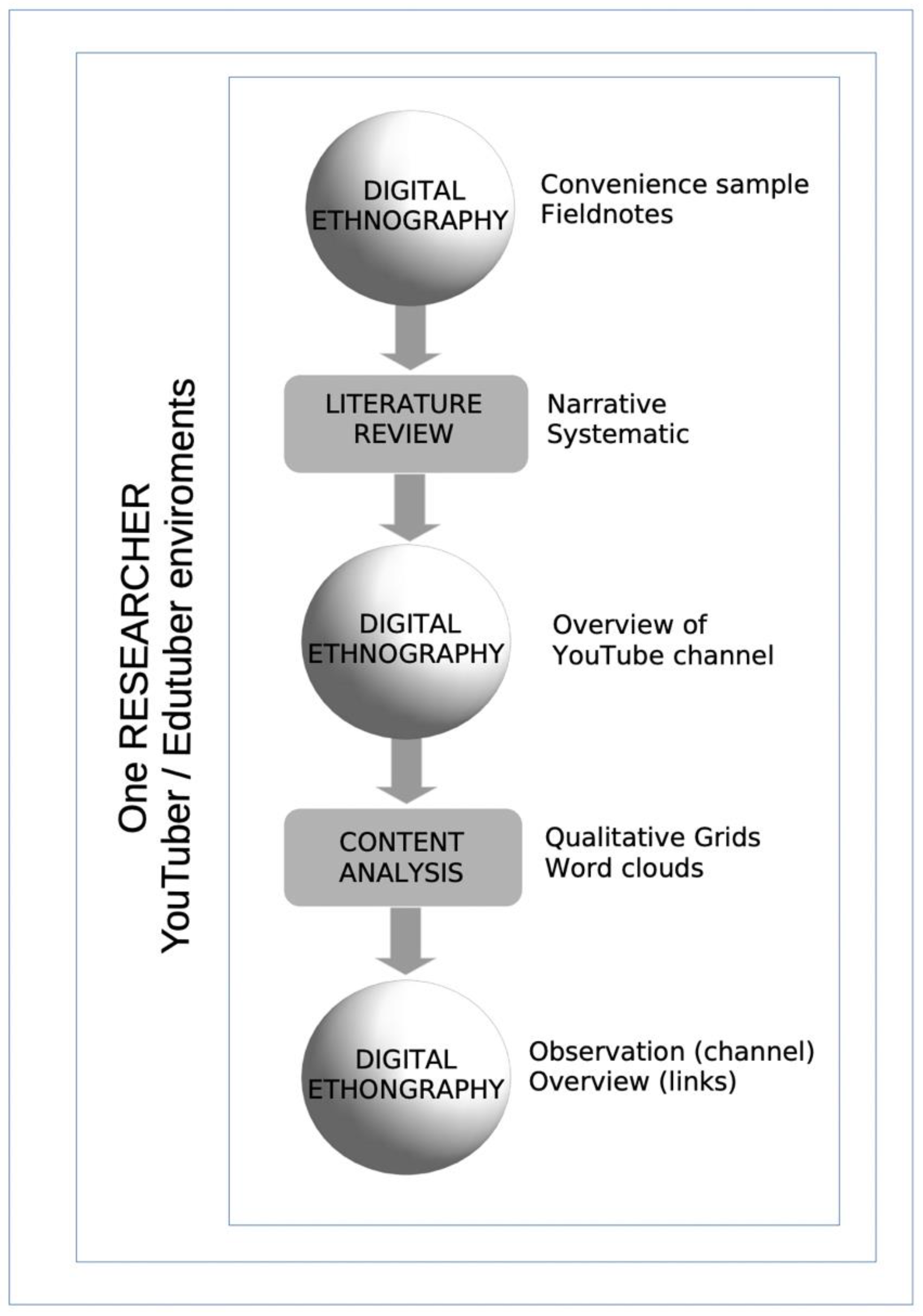
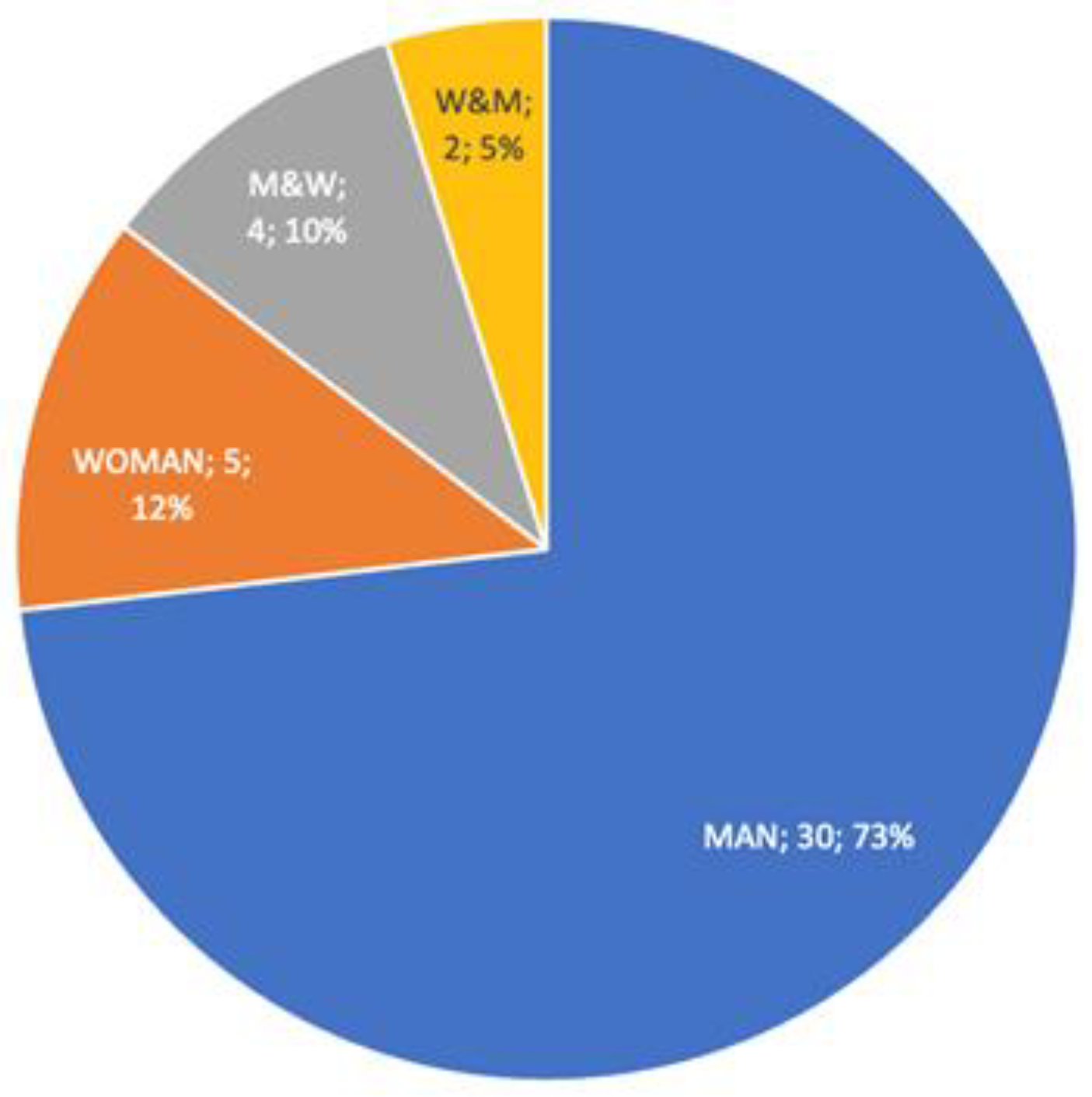
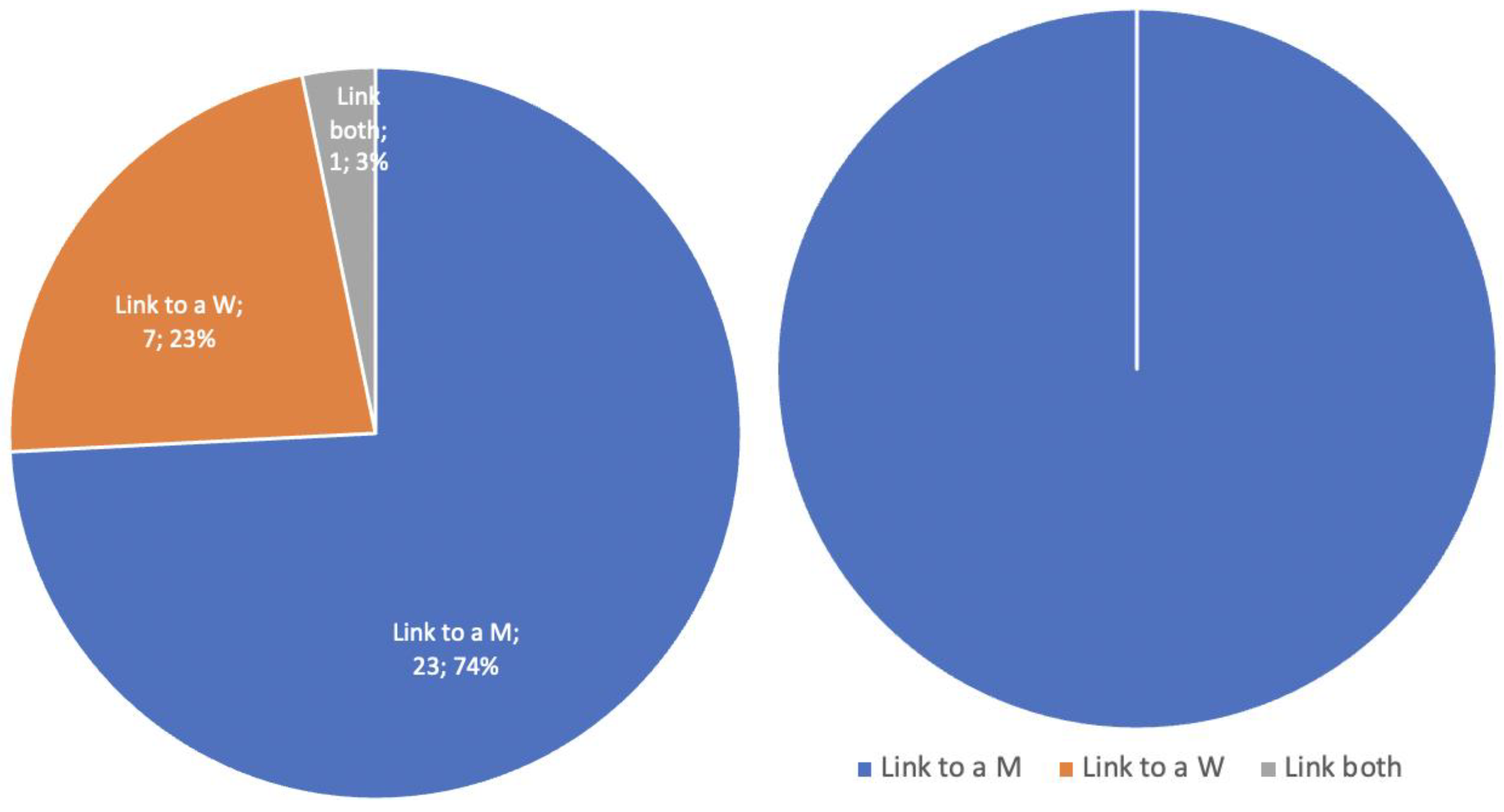
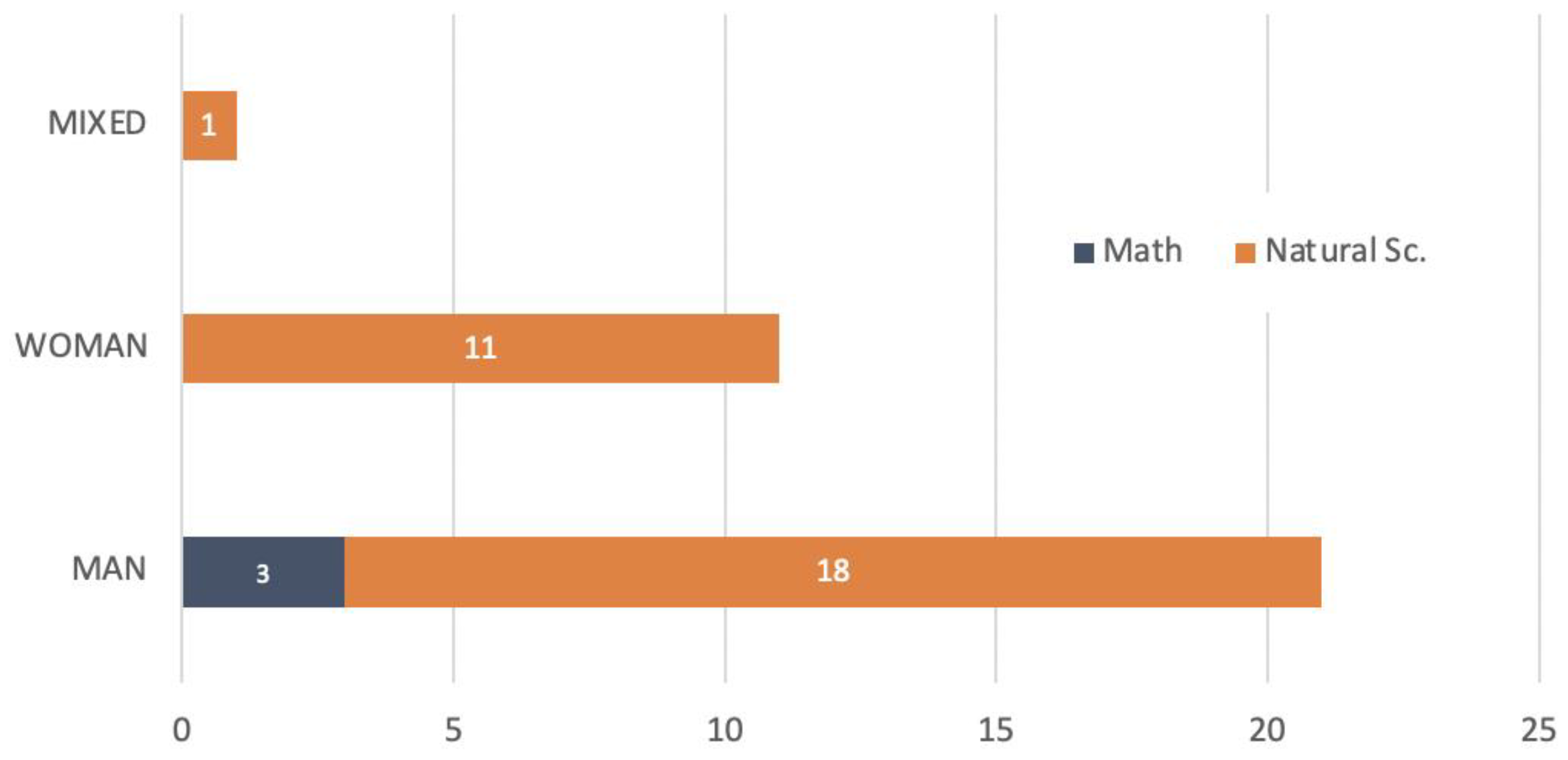
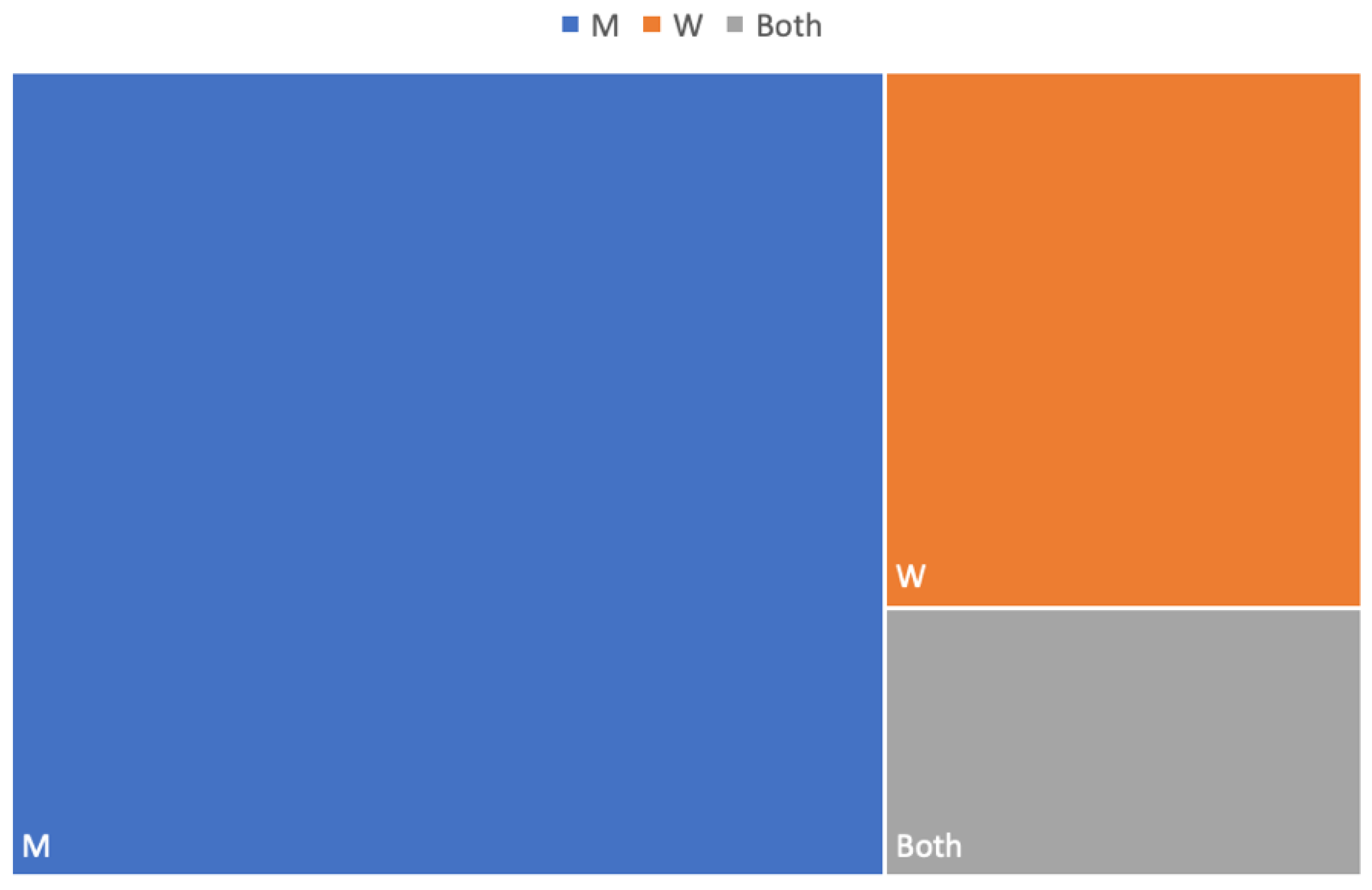
| Note | Videos ** | Name | Date * |
|---|---|---|---|
| 1 | 71 | Introduction to the Mechanical Universe | 23 November 2021 |
| 2 | 8 | Algebraic Expressions/Coursera | 16 September 2021 |
| 3 | 6 | Learning numeracy | 16 September 2021 |
| 4 | 44 | Science Factor | 29 May 2021 |
| 5 | 1 | Learning trigonometry | 12 April 2021 |
| 6 | 11 | MRUA MRUV. Linear motion | 7 April 2021 |
| 7 | 3 | Dimensional analysis | 5 April 2021 |
| 8 | 4 | Physics Course: Motion | 5 April 2021 |
| 9 | 1 | Complete class of probability from scratch | 9 March 2021 |
| 10 | 2 | Route of particles in LHC | 12 February 2021 |
| Channel | Routine | Steps |
|---|---|---|
| Wandering | OBSERVATION | 1. Google: name of channel and mouse click 2. Youtuber presentation video 3. Entry interfaces to each video (photogram of each uploaded video) 4. Wandering around channel content, viewing three or four videos chosen according to most attractive title based on the subjective opinion of the researcher, taking three to four minutes each. 5. Sections that the channel contains 6. Video titles and duration 7. Viewing and content of links to other YouTube channels |
| To live | NOTATION | 8. Grid with descriptors (URL, title, subjects, gender) 9. Viewing for 30 to 60 min 10. Number of views and subscribers, Social Blade consulted 11. Details provided, relevant notations from an educational point of view 12. Profiling of descriptions with new viewings |
| To visit | LINKING | 13. Click with mouse from a “To Live” channel 14. Steps 2 to 4 (wandering channel/OBSERVATION dimension) |
| Time * | STEM Channels | Gender ** | |||
|---|---|---|---|---|---|
| M | W | M&W | W&M | ||
| 958:06 | 41 | 30 | 5 | 4 | 2 |
| Abs. Freq | Rel. Freq | |||||
|---|---|---|---|---|---|---|
| Man | Woman | Mixed | Man | Woman | Mixed | |
| Exact Sciences | 3 | 0 | 0 | 100% | 0 | 0 |
| Natural Sciences | 18 | 11 | 1 | 60% | 36% | 4% |
| Total | 21 | 11 | 1 | |||
| Total STEM Channels Linked | Links from Edutuber’s Gender | Channels Linked | Link to a M * | Link to a W * | Link to Both * |
|---|---|---|---|---|---|
| 36 | By M = 5 | 31 | 23 | 7 | 1 |
| By W = 1 | 5 | 5 | 0 | 0 | |
| Total 6 | 36 | 28 | 7 | 1 |
| M | W | Both | |
|---|---|---|---|
| Abs. Freq | 11 | 4 | 2 |
| Rel. Freq | 64.7% | 23.5% | 11.8% |
Disclaimer/Publisher’s Note: The statements, opinions and data contained in all publications are solely those of the individual author(s) and contributor(s) and not of MDPI and/or the editor(s). MDPI and/or the editor(s) disclaim responsibility for any injury to people or property resulting from any ideas, methods, instructions or products referred to in the content. |
© 2023 by the authors. Licensee MDPI, Basel, Switzerland. This article is an open access article distributed under the terms and conditions of the Creative Commons Attribution (CC BY) license (https://creativecommons.org/licenses/by/4.0/).
Share and Cite
Amorós-Poveda, L.; Bernárdez-Gómez, A. Edutuber and Gender in STEM. Educ. Sci. 2024, 14, 40. https://doi.org/10.3390/educsci14010040
Amorós-Poveda L, Bernárdez-Gómez A. Edutuber and Gender in STEM. Education Sciences. 2024; 14(1):40. https://doi.org/10.3390/educsci14010040
Chicago/Turabian StyleAmorós-Poveda, Lucía, and Abraham Bernárdez-Gómez. 2024. "Edutuber and Gender in STEM" Education Sciences 14, no. 1: 40. https://doi.org/10.3390/educsci14010040
APA StyleAmorós-Poveda, L., & Bernárdez-Gómez, A. (2024). Edutuber and Gender in STEM. Education Sciences, 14(1), 40. https://doi.org/10.3390/educsci14010040







